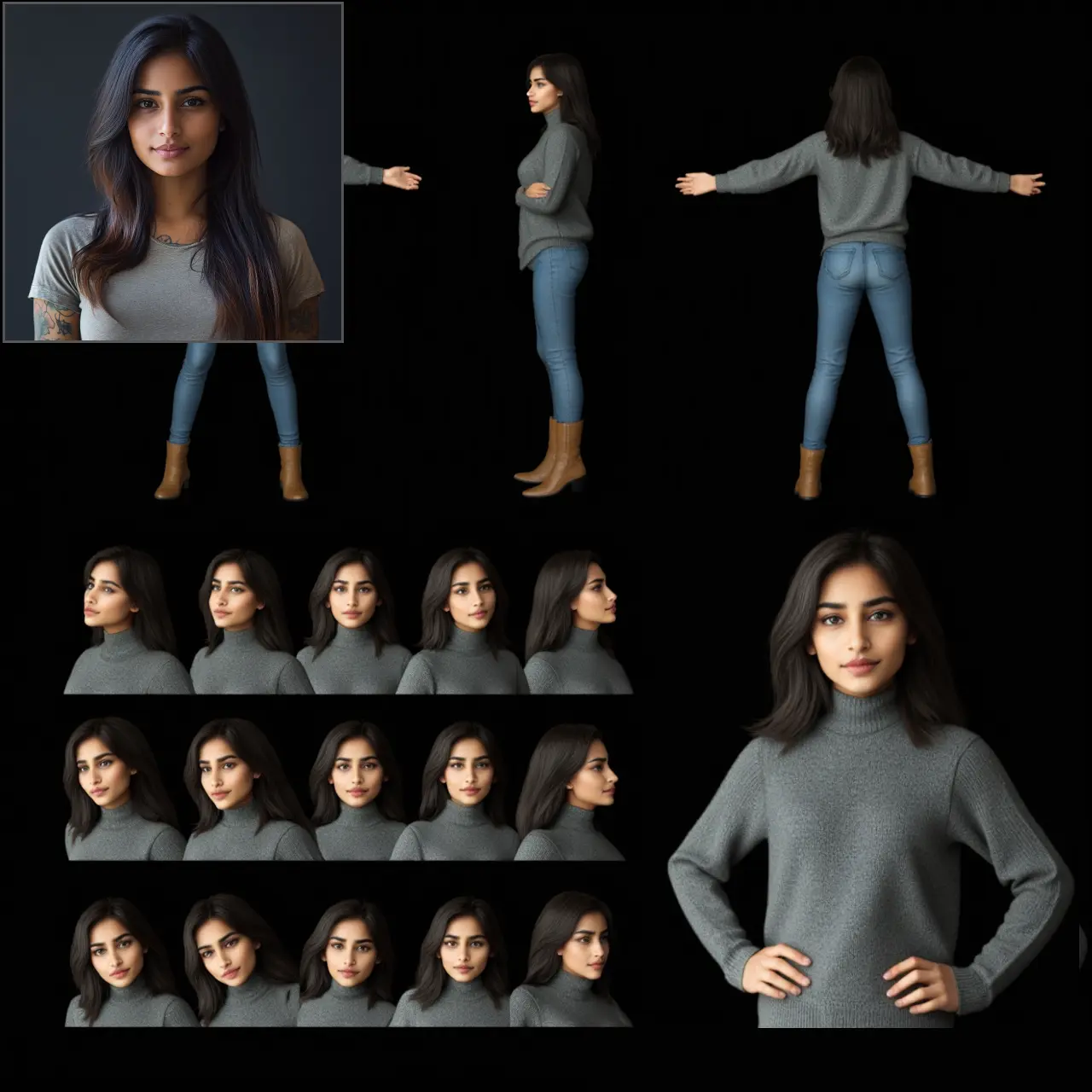ComfyUI Node: Latent Scale (on Pixel Space)
LatentPixelScale
CategoryImpactPack/Upscale
Dr.Lt.Data (Account age: 747days) Extension
ComfyUI Impact Pack Latest Updated
2025-03-23 Github Stars
2.28K
How to Install ComfyUI Impact Pack
Install this extension via the ComfyUI Manager by searching for ComfyUI Impact Pack- 1. Click the Manager button in the main menu
- 2. Select Custom Nodes Manager button
- 3. Enter ComfyUI Impact Pack in the search bar
Visit ComfyUI Online for ready-to-use ComfyUI environment
- Free trial available
- 16GB VRAM to 80GB VRAM GPU machines
- 400+ preloaded models/nodes
- Freedom to upload custom models/nodes
- 200+ ready-to-run workflows
- 100% private workspace with up to 200GB storage
- Dedicated Support
Latent Scale (on Pixel Space) Description
Upscale latent images with various scaling methods for high-quality AI image generation.
Latent Scale (on Pixel Space):
The LatentPixelScale node is designed to upscale latent images, which are intermediate representations used in AI image generation processes. This node allows you to enhance the resolution of these latent images using various scaling methods, ensuring that the upscaled images maintain high quality and detail. By leveraging different upscaling techniques and optional model-based upscaling, this node provides flexibility and control over the upscaling process. It is particularly useful for AI artists looking to improve the resolution of their generated images without compromising on quality. The node also supports the use of tiled VAE (Variational Autoencoder) for efficient processing of large images.
Latent Scale (on Pixel Space) Input Parameters:
samples
This parameter represents the latent images that you want to upscale. It is the core input for the node and is required for the upscaling process.
scale_method
This parameter allows you to choose the method used for upscaling the latent images. The available options are nearest-exact, bilinear, lanczos, and area. Each method has its own characteristics in terms of quality and computational efficiency. For example, nearest-exact is fast but may produce blocky results, while lanczos offers high-quality results but is computationally intensive.
scale_factor
This parameter defines the factor by which the latent images will be upscaled. It is a floating-point value with a default of 1.5, a minimum of 0.1, and a maximum of 10000. Adjusting this factor allows you to control the degree of upscaling applied to the latent images.
vae
This parameter specifies the Variational Autoencoder (VAE) model used for encoding and decoding the latent images. The VAE is essential for converting latent representations back into pixel space and vice versa.
use_tiled_vae
This boolean parameter determines whether to use a tiled VAE for processing. When enabled, it allows for efficient handling of large images by processing them in smaller tiles. The default value is False, with labels enabled and disabled to indicate its state.
upscale_model_opt (optional)
This optional parameter allows you to specify an upscale model for model-based upscaling. When provided, the node will use this model to enhance the resolution of the latent images, potentially offering better quality than traditional upscaling methods.
Latent Scale (on Pixel Space) Output Parameters:
LATENT
This output represents the upscaled latent images. It is the primary result of the upscaling process and can be further processed or decoded into pixel space.
IMAGE
This output provides the upscaled images in pixel space. It is useful for previewing the final upscaled images and ensuring that the upscaling process has achieved the desired quality and resolution.
Latent Scale (on Pixel Space) Usage Tips:
- Experiment with different
scale_methodoptions to find the best balance between quality and performance for your specific use case. - Use the
scale_factorparameter to control the degree of upscaling. Higher values will increase the resolution but may also require more computational resources. - Enable
use_tiled_vaefor efficient processing of large images, especially when working with high-resolution outputs. - If available, utilize the
upscale_model_optparameter to leverage model-based upscaling for potentially better quality results.
Latent Scale (on Pixel Space) Common Errors and Solutions:
ValueError: Invalid scale factor
- Explanation: This error occurs when the
scale_factorparameter is set to a value outside the allowed range (0.1 to 10000). - Solution: Ensure that the
scale_factoris within the specified range and adjust it accordingly.
TypeError: Missing required parameter 'samples'
- Explanation: This error indicates that the
samplesparameter, which is required for the upscaling process, is not provided. - Solution: Make sure to provide the latent images as input to the
samplesparameter.
RuntimeError: VAE model not specified
- Explanation: This error occurs when the
vaeparameter is not specified, which is necessary for encoding and decoding latent images. - Solution: Ensure that a valid VAE model is provided to the
vaeparameter.
AttributeError: 'NoneType' object has no attribute 'upscale'
- Explanation: This error may occur if the
upscale_model_optparameter is set toNonebut the node attempts to use model-based upscaling. - Solution: Either provide a valid upscale model to the
upscale_model_optparameter or ensure that the node is configured to use traditional upscaling methods.
Latent Scale (on Pixel Space) Related Nodes
RunComfy is the premier ComfyUI platform, offering ComfyUI online environment and services, along with ComfyUI workflows featuring stunning visuals. RunComfy also provides AI Models, enabling artists to harness the latest AI tools to create incredible art.


